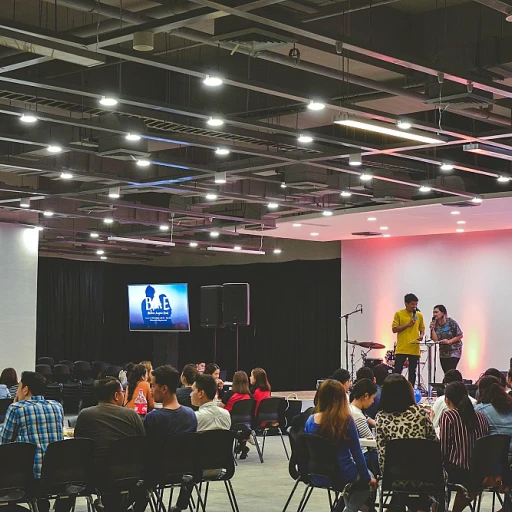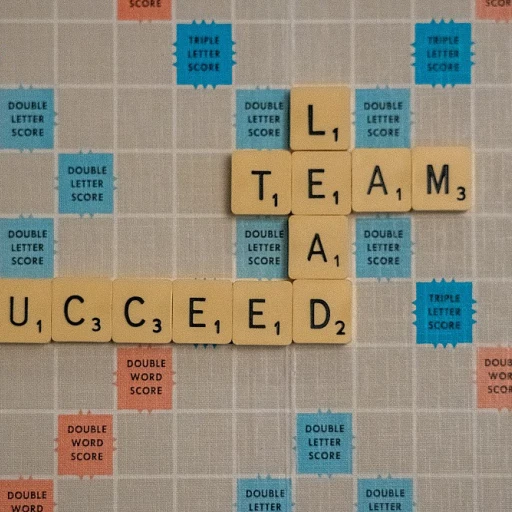
Understanding the Dynamics of Leadership Teams
Exploring the Dynamics of Leadership Teams
The dynamics within leadership teams play a critical role in shaping the overall effectiveness and success of an organization. Understanding these dynamics is essential for fostering a high-performing team environment. Teams are not just about a group of people; they are a blend of diverse skills, backgrounds, and perspectives that come together to drive the organization towards its goals.- Leadership Team Dynamics: The concept of team dynamics encompasses how team members interact, communicate, and build relationships over time. These interactions can significantly impact team development and organization success, leading to either strong leadership and collaboration or, conversely, misunderstandings and conflicts.
- Role of Trust: Trust is the bedrock of any effective leadership team. Building trust among team members fosters a collaborative environment where open communication and mutual respect thrive. This is essential for problem solving and decision making, especially in cross-functional teams where different departments or functions must work together seamlessly.
- Importance of Communication: Clear and effective communication is a cornerstone of successful teams. Ensuring all team members are on the same page mitigates the risk of misunderstandings and aids in the efficient achievement of common goals.
- Executive Leadership: In particular, the executive team plays a pivotal role in setting the tone and culture of the organization. Their behavior and relationship set the standard for the rest of the team and the broader organization.
Identifying Key Leadership Qualities
Unveiling Essential Traits for Strong Leadership
Understanding and identifying key leadership qualities is crucial for effective leadership development within teams. The foundation of a high performing leadership team is built upon a clear recognition of these traits. Leaders need to possess a variety of skills that align with the organization's goals and foster a culture of trust and collaboration. Here's a closer look at these essential qualities:
- Adaptability: Leaders must be flexible and responsive to changes. An adaptable leader can navigate the complexities of team dynamics and steer their team towards success even in uncertain times.
- Effective Communication: Clear and efficient communication is a cornerstone of successful leadership. Leaders should strive to express their vision and goals lucidly, ensuring all team members are on the same page.
- Problem Solving: Strong leaders are adept problem solvers. They have the ability to analyze situations, take decisive action, and inspire their teams to overcome challenges swiftly.
- Empathy: Empathetic leaders can connect with their team members on a deeper level, fostering a supportive environment where individuals feel valued and motivated to achieve the organization's objectives.
- Integrity: Leaders who demonstrate honesty and uphold ethical standards earn the trust of their team, paving the way for long term organization success.
To cultivate these qualities and foster effective leadership, it's essential to develop a strategic approach. Mastering the art of a strategic communications calendar can significantly enhance communication strategies within your organization, setting a strong foundation for leadership success.
Building Trust and Collaboration
The Foundation of Trust Within Teams
Building trust and fostering collaboration within a leadership team isn't just a matter of will—it's the bedrock upon which successful team development thrives. Effective leadership hinges on creating an environment where team members feel valued, respected, and safe to express their ideas. When leaders focus on cultivating trust, it paves the way for open and transparent communication, which is crucial for effective decision making. Achieving collaboration in an organization requires more than constructing a positive culture; it demands a deliberate effort to establish trust among team members. Here’s how a leadership team can foster such an environment:- Lead by Example: Team leaders need to consistently demonstrate transparency and integrity. This means publicly acknowledging mistakes and sharing both successes and setbacks openly.
- Encourage Open Dialogue: Creating spaces where team members feel they can communicate honestly without fear of repercussions is vital. This encourages innovative ideas and builds a sense of community.
- Empower Through Accountability: Allowing team members to take responsibility for their roles can boost confidence. It also fosters a sense of ownership and motivates individuals to align personal goals with organizational success.
- Promote Diversity and Inclusion: Celebrating diverse perspectives enhances collaboration, broadens problem solving capabilities, and leads to more comprehensive decision making.
- Provide Regular Feedback: Constructive and clear feedback offers opportunities for growth, ensuring members are consistently aware of how to improve.
Developing a Culture of Continuous Learning
Fostering a Learning Environment
Building a culture of continuous learning within a leadership team is crucial for achieving organizational success and long-term growth. Among high performing teams, fostering a learning environment not only enhances leadership skills but also strengthens trust and collaboration among team members. Creating such an atmosphere begins with clear communication of the organization's goals and development objectives. To build this culture, leaders should focus on the following strategies:- Encourage Open Communication: Effective communication is the foundation of any successful team development effort. By promoting open discussions and actively seeking feedback, team leaders can create an environment where team members feel comfortable sharing their ideas and concerns.
- Promote Cross-Functional Collaboration: Encouraging collaboration across different functions within the organization helps break down silos and fosters a more holistic approach to problem solving. This approach helps team members fill knowledge gaps, ultimately strengthening the organization as a whole.
- Provide Access to Continuous Learning Resources: A culture of learning is supported by offering team members access to resources such as workshops, webinars, and online courses. By investing in learning opportunities, leaders can ensure teams are equipped with the necessary skills for effective leadership.
- Set Clear Development Goals: Leadership development initiatives should be aligned with the organization's objectives. By setting specific, achievable goals for team members, leaders can track progress and measure success in the long term.
- Recognize and Reward Growth: Encouraging growth requires recognizing and rewarding successful team members. Highlighting personal achievements contributes to building a strong leadership culture and motivates individuals to pursue continuous improvement.
Implementing Effective Communication Strategies
Effective Communication as the Backbone of Leadership
In the context of leadership development, mastering the art of communication within teams is crucial. Effective communication serves as the backbone of any successful organization, fostering a culture of transparency, collaboration, and trust. It allows team leaders to articulate goals clearly, ensuring that every team member understands the organization’s vision and their role in achieving it. Poor communication can lead to misunderstandings, reduced morale, and inefficiency. Hence, leaders should prioritize building strong relationships through authentic and consistent communication. Here are some strategies to enhance communication skills within leadership teams:- Encourage Open Dialogue: Create an environment where team members feel comfortable sharing their ideas and concerns without fear of judgment. This openness will foster a culture of trust and respect.
- Develop Active Listening Skills: Leaders should not only focus on articulating their messages but also practice active listening. This involves giving full attention to the speaker, understanding their message, and responding thoughtfully. Active listening is key to effective leadership and team development.
- Utilize Technology Efficiently: Leverage communication tools and platforms to streamline information sharing and collaboration within cross-functional teams. This is particularly important for organizations with remote or dispersed teams.
- Deliver Constructive Feedback: Providing feedback is essential for continuous improvement and development of leadership skills. Ensure feedback is constructive, specific, and focuses on behaviors that can be improved to enhance team effectiveness.
- Establish Clear Communication Channels: Clearly define the channels through which teams communicate. Whether it’s email, instant messaging, or face-to-face meetings, having structured channels in place ensures information flows smoothly.
Measuring Success in Leadership Development
Tracking the Progress of Leadership Growth
In leadership development, accurately measuring success involves more than tracking metrics. It’s about evaluating both the tangible and intangible benefits that leadership initiatives provide to an organization. Developing clear, effective leadership involves several components, from fostering culture to team development and communication strategies.
- Evaluating Leadership Team Performance: Effective leadership teams are known for their ability to make informed decisions, adapt to changing dynamics, and maintain high levels of collaboration. Regular assessments of team goals and achievements help identify areas where leadership skills excel and where improvement is needed.
- Assessing Trust and Collaboration: Strong leadership cannot exist without building trust. Gauging the trust levels within teams provides a deeper insight into an organization’s culture. This is critical for encouraging long-term organization success and fostering a culture of mutual respect and support.
- Monitoring Communication Effectiveness: Leadership development relies heavily on the ability to communicate clear and effective messages. By implementing regular reviews and feedback mechanisms, organizations can ensure that communication remains a tool for growth rather than a barrier.
- Measuring Cultural Impact: As leaders nurture a culture of continuous learning and development, it’s essential to measure how these cultural shifts contribute to the overall success of the organization. This involves soliciting feedback from team members about their experiences and the changes witnessed in team dynamics.
- Tracking Problem Solving and Decision Making: A keystone of effective leadership is the ability to solve complex problems swiftly. Leaders should be regularly evaluated on their problem solving capabilities and how well they navigate cross functional challenges.
Continual adaptation and reassessment of leadership development strategies, aligned with executive goals, allow organizations to fill gaps in development, focus on building critical skills, and maintain a trajectory towards strong leadership and objective fulfillment.












